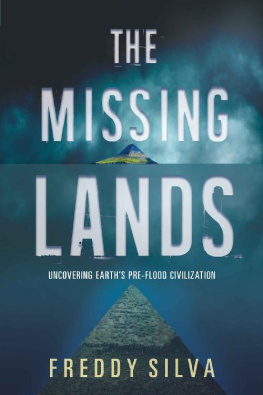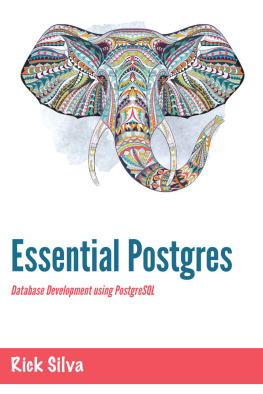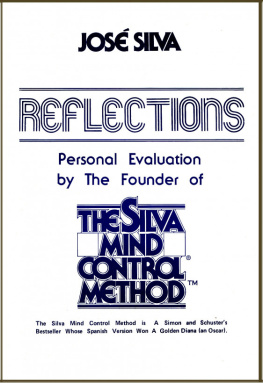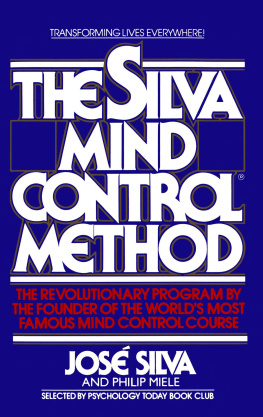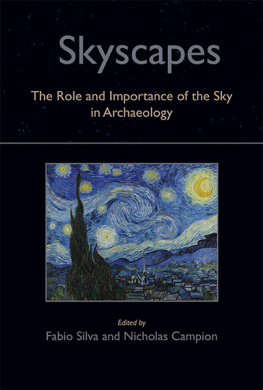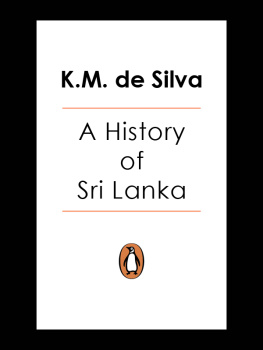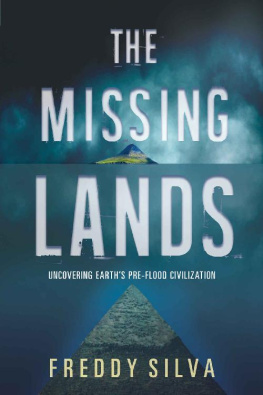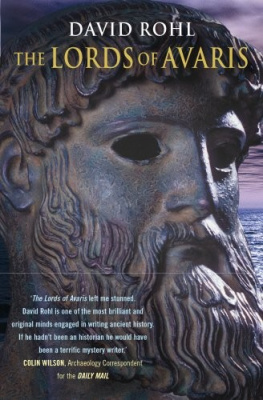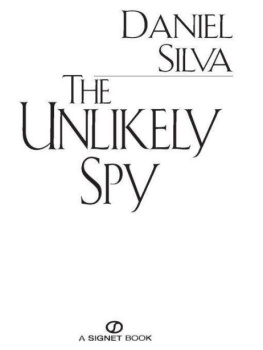Silva - The missing lands: uncovering Earths pre-flood civilization
Here you can read online Silva - The missing lands: uncovering Earths pre-flood civilization full text of the book (entire story) in english for free. Download pdf and epub, get meaning, cover and reviews about this ebook. year: 2019, publisher: Invisible Temple, genre: Religion. Description of the work, (preface) as well as reviews are available. Best literature library LitArk.com created for fans of good reading and offers a wide selection of genres:
Romance novel
Science fiction
Adventure
Detective
Science
History
Home and family
Prose
Art
Politics
Computer
Non-fiction
Religion
Business
Children
Humor
Choose a favorite category and find really read worthwhile books. Enjoy immersion in the world of imagination, feel the emotions of the characters or learn something new for yourself, make an fascinating discovery.
The missing lands: uncovering Earths pre-flood civilization: summary, description and annotation
We offer to read an annotation, description, summary or preface (depends on what the author of the book "The missing lands: uncovering Earths pre-flood civilization" wrote himself). If you haven't found the necessary information about the book — write in the comments, we will try to find it.
Silva: author's other books
Who wrote The missing lands: uncovering Earths pre-flood civilization? Find out the surname, the name of the author of the book and a list of all author's works by series.
The missing lands: uncovering Earths pre-flood civilization — read online for free the complete book (whole text) full work
Below is the text of the book, divided by pages. System saving the place of the last page read, allows you to conveniently read the book "The missing lands: uncovering Earths pre-flood civilization" online for free, without having to search again every time where you left off. Put a bookmark, and you can go to the page where you finished reading at any time.
Font size:
Interval:
Bookmark:
Also by this Author
The Lost Art of Resurrection: Initiation, secret chambers and the quest for the Otherworld
First Templar Nation: How the Knights Templar created Europes first nation-state
The Divine Blueprint: Temples, power places and the global plan to
shape the human soul (formerly Common Wealth)
Secrets In The Fields: The science and mysticism of crop circles
Chartres Cathedral: The missing or heretic guide

www.invisibletemple.com
Book text and design 2019 Freddy Silva
All rights reserved, including the right to reproduce this work in any form whatsoever, including electronic forms and transmissions, without permission in writing from the author, except for brief passages in connection with a review.
Whilst every effort has been made to ensure the use of quoted text and images have been credited correctly, sometimes errors can occur. If any authors or photographers feel this to be the case, please contact the author, and the necessary corrections will be made in future printings.
ACKNOWLEDGEMENTS
Teotokai Andrew, for the generous sharing of his peoples hidden history. Peter Marsh for opening new doors in Polynesia. Jos and Chris at Castle Hill Station for access to the land. Mikeljon Winckel at eLocal Magazine for the images. My friends Irena Stenner, Marilee Marrinan and Wendy Craig for the valuable support. Miguel Angel Vergara for his friendship and invaluable knowledge of the Maya. Edgar Mijita, my excellent guide in the Andes. The librarians I overwork at Library of Congress and Portland Library. Alexander Turnbull Library, Wellington. Regina Meredith for the time. Gaia TV for the exposure. And all you supporters out there. Thankx.
Contents
to those who Watch

The three most recent glacial periods are called the Oldest, Older, and Younger Dryas.
They are named for an eight-petal alpine wildflower.
The Oldest Dryas began c.13,000 BC and ended with a brief warm spell until another freeze the Older Dryas began c.12,000 BC. It too ended with a warm spell.
The Younger Dryas began c.10,800 BC and ended c.9700 BC. Both markers occurred in a geological instant when large objects collided with the Earth. The last event generated a global flood whose waves reached the Himalaya.
During the Younger Dryas it is believed only primitive people populated the Earth. Yet around them existed someone else, a more advanced civilization whose deeds, traditions and monuments exist all around. After the flood, a select brotherhood appeared from the sea to assist humanity rebuild, then vanished... but not before leaving a warning.


Where we are headed...
1. THE CERTAINTY THAT THINGS ARE MUCH OLDER

Saqsayhuaman, Peru. The Inka had no idea who built it either.
In 1914 the Dutch Department of Antiquities published a report of a temple made of columnar basalt, reached by five terraces on the slopes of a 3000-foot tall mountain in central Java. It would be another hundred years before exploration of the site using ground penetrating radar revealed something explosive: the temple was just one exposed section of a much larger site, and the Mountain of Light, as locals called it, turned out not to be a mountain at all but a large-scale engineering project, a series of step pyramids built over successive periods, complete with a sealed chamber. Traces of human activity date the colossal structure to around 22,000 BC.
At the other end of the Indonesian archipelago lies the island of Sumba, where villagers still use megaliths to build places of spiritual significance in the style of their forebears. No one remembers how long this tradition has been enacted, but local legends speak of unusual, giant people disembarking here after a global flood destroyed their homeland. These seafarers moved the original stones by means of some magical force from mountains on the other side of the island to where they stand today. One such monolith a granite slab carved with perfectly squared, level and shallow steps is identical in design to another at Saqsayhuaman, a megalithic metropolis 10,600 miles to the east, in Peru.
Another site in the Andes on what used to be the ancient shore of Lake Titicaca before an earth-shattering cataclysm rearranged the region is Puma Punku, one of the world's oldest temples, whose jumbled megaliths reveal an extraordinary level of finesse in the cutting and shaping of stone that modern masons are at pains to explain. How did primitive people achieve such results without metal tools or diamond drill technology?
The Bolivian altiplano is filled with oddities such as the unsettling question of Aymara, a language some experts consider to be the oldest in the world. The computer scientist Ivan Guzman de Rojas demonstrated how Aymara is both skilfully designed and artificial its syntax in particular, which, after careful analysis, was found to be rigidly structured and unambiguous, and seemingly developed from scratch, unlike standard language which evolves organically. Rojas proved how this ancient Andean tongue can be written concisely in the type of algebraic shorthand a computer can understand. Aymara is an algorithm with an ability to translate from one language to another, a bridge language, whereby the language of an original document can be translated into Aymara and then into any number of languages.
And yet Aymara itself is derived from an earlier language, Puquina, a name likewise given to an Andean civilization whose remaining tribespeople still openly discuss their homeland, a landmass nicknamed Mu that once occupied a significant portion of the Pacific Ocean, from whence their predecessors fled after it sank during a global flood. It was they who assisted in setting up new temple cities on the shores of Lake Titicaca.
At the northern end of the American continent, the Hopi maintain oral traditions recounting the destruction of the world on four separate occasions. The details of the second event appear to describe the onset of the Older Dryas glacial period some 14,000 years ago, but more to the point, they state how this climate change was induced by a violent alteration in the Earth's rotation and the reversal of its poles. In their words: "[the god] Stuknang commanded the twins, Poqanhoya and Palongawhoya, to leave their posts at the north and south ends of the world's axis where they were stationed to keep the earth properly rotating. The twins had hardly abandoned their stations when the world, with no one to control it, teetered off balance, spun around crazily, then rolled over twice. Mountains plunged into the seas with a great splash, seas and lakes splashed over the land; and as the world spun through cold and lifeless space it froze into solid ice."
Finally there is the case of Aotearoa, the island nation today called New Zealand, of which so little is ever mentioned and of whose prehistory even less is known. All this changed in 1994 when elders representing one of the nations few remaining indigenous people, the Waitaha, published their oral traditions in which they describe their forebears a race of gods called Urukehu being overwhelmed by the gigantic waves of the great flood while traversing the Pacific, at a stroke placing their account some 11,000 years ago.
Next pageFont size:
Interval:
Bookmark:
Similar books «The missing lands: uncovering Earths pre-flood civilization»
Look at similar books to The missing lands: uncovering Earths pre-flood civilization. We have selected literature similar in name and meaning in the hope of providing readers with more options to find new, interesting, not yet read works.
Discussion, reviews of the book The missing lands: uncovering Earths pre-flood civilization and just readers' own opinions. Leave your comments, write what you think about the work, its meaning or the main characters. Specify what exactly you liked and what you didn't like, and why you think so.

